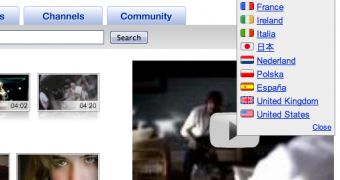Two weeks ago, YouTube released 9 regional versions of the online video sharing service to allow the residents of several countries to access their own version of the product. Brazil, France, Ireland, Italy, Japan, Netherlands, Poland, Spain, UK and US where the lucky countries that received a new version of the famous YouTube.
The differences between the local flavors and the main YouTube? Well, the most important change is that every regional online video sharing service is translated into the local language instead of English like the famous site of YouTube. However, some of the users were afraid that the parent company might impose barriers for the regional versions of YouTube to control the clips viewed by certain nations.
"All of your videos are available to everyone, no matter which site you set as your default. So even if you choose a particular country as your preference, the content available to you is still the same. If you prefer a more global destination, the original .com site will continue to be just that. (We're changing the icon to make it a lot clearer.)" the YouTube team explained. "We'll also continue to program the .com home page to include the best of your videos from around the world, so just because you're featured on the UK site, for example, doesn't mean you can't also appear on the .com home page."
Anyway, the regional versions of YouTube might be easily used by the parent company Google to control and separate the clips offered to certain countries. Take the example of Thailand. The local authorities accused Google and banned YouTube for several clips published on its page that were insulting the nation's king. If Google had a Thai version of YouTube, it would be easy to resolve the issue by removing them only from this local page, leaving them available to the users from other countries.

 14 DAY TRIAL //
14 DAY TRIAL //